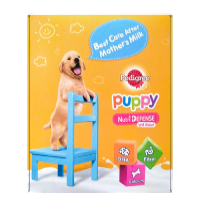
In this section
Our tips to keep your dog’s teeth and gums healthy

share:
1. Provide a daily dental care routine.
Ideally start as a puppy. Tooth brushing is the single most effective method but you may be still want to combine several different methods.
2. If your dog is already older, you should still begin daily dental care. Have the mouth checked to be sure all is well before starting.
3. Make sure that your dog gets an oral health examination by a veterinary professional at least once a year.
4. Provide chews and toys which are recommended as safe for dogs. Do not allow your dog to chew on hard or abrasive objects (such as bones, hard nylon chew toys or tennis balls) - these often damage teeth and gums.
Review this article:
Get a Sample
Buy Now
FAQs on Dog’s Plaque & Tartar on Dog’s Teeth
Gum diseases like periodontal diseases can prove to be really fatal to a dog if left untreated. Studies have shown that it can reduce 2 years of a dog’s life if untreated. Moreover, stage 4 of periodontal diseases can cause severe bacterial infection in your dog which can damage their vital organs, like the heart, liver, and kidneys.
It is best not to try to scrape off the tartar from your dog’s teeth by yourself because you can accidentally cause damage to their teeth enamel and gums. The best option is to consult a vet right away.
Tartar build-up on a dog’s teeth is caused when plaque is left uncleaned. Plaque is caused when bacteria present in the mouth meet the food particles stuck in the teeth. When this plaque mineralises, it hardens into tartar.
Here are a few signs that indicate your dog’s oral health is not in a good shape:
- Tartar build-up
- Cavities
- Discolouration of teeth
- Gingivitis (swollen gums)
- Retreating Gums
- Foul breath
- Reluctance in letting you touch a side of their face
- Difficulty in chewing
- Unusual drooling
- Ropey or bloody saliva
- Extreme sneezing
- Bleeding from mouth








